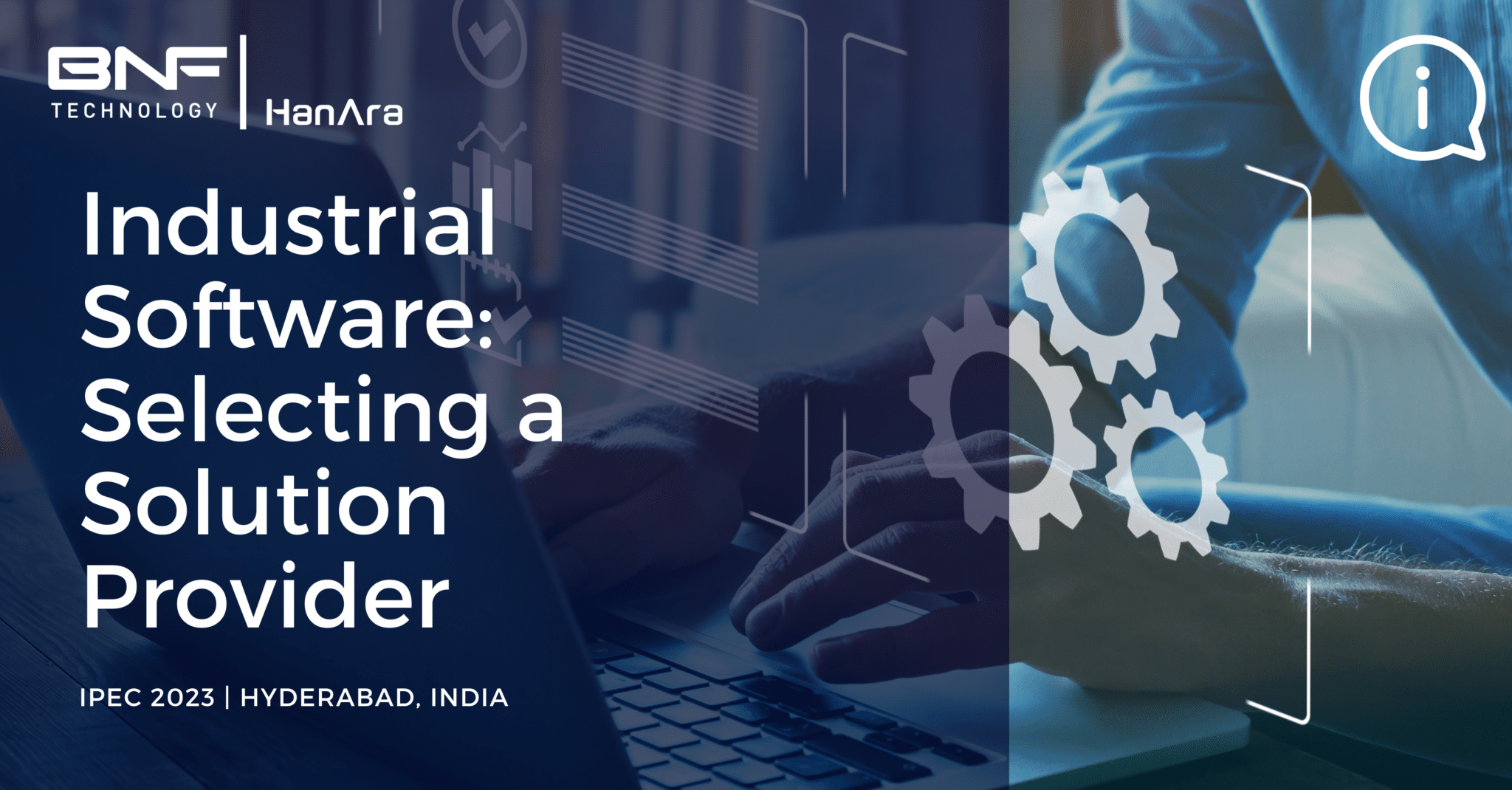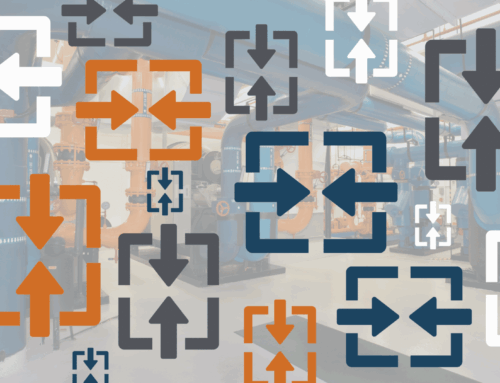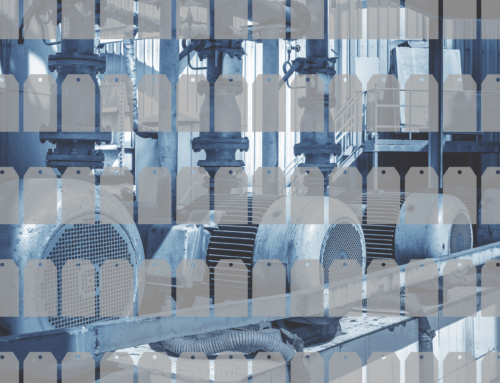Our team members exhibited at the India Process Expo & Conference 2023 this past month. As one of the world’s top economies, India’s process industry has experienced and will continue to experience significant growth. This growth was on display at the conference as organizations from pharma, chemical, biotechnology, batteries, electric storage, automotive, defense, aerospace, and food and beverage came to collaborate and share best practices.
Indian Digital Transformation
The Indian process industry is undergoing a significant transformation, marked by a shift towards automation and digitalization. Factors such as the country’s focus on boosting its manufacturing sector and reducing dependency on labor-intensive practices have driven this evolution. According to the United States International Trade Administration, some key developments and opportunities in the Indian process industry include:
Economic Contribution:
Before the COVID-19 pandemic, the Indian manufacturing industry accounted for approximately 16-17 percent of the country’s GDP. Economists expect this percentage to only increase in the coming years and project it to be one of the fastest-growing sectors in India. As a result, demand for high-end equipment and machinery is surging in sectors such as aerospace/defense, automotive, and information and communication technology.
Digital Transformation:
Technology is driving innovation in the Indian manufacturing landscape. Digital transformation has emerged as a crucial element for companies seeking a competitive edge in this rapidly evolving market. In the past, the Indian industrial market favored labor-intensive processes due to the availability of labor and the higher cost of technology. However, organizations are adopting digital solutions to improve efficiency, quality, and output to compete domestically and internationally and minimize uncertainty and production risks.
Government Initiatives:
Recognizing the need to advance the industry, the Government of India has implemented several initiatives to bolster the process industry:
- National Manufacturing Policy: aims to increase the share of manufacturing in GDP to 25 percent by 2025.
- Make in India: expected to boost demand for machinery and equipment by promoting local manufacturing.
- Production-linked Incentive (PLI) Scheme: launched in 2022 to elevate 13 sectors to global manufacturing standards.
This shift towards advanced manufacturing and Industry 4.0 was on display at the conference. And it was evident that the future of the Indian (and global) process relies on the partnerships created by manufacturers, service providers, and technology and solution providers.
As a solution provider, we partner with process industry organizations to help provide the right information at the right time. But to remain competitive, how do you select the right solution provider to help enhance efficiency, optimize processes, and ensure compliance?
The Industrial Software Landscape
Industrial software, also known as industrial automation software or manufacturing software, encompasses a wide range of applications designed to streamline and enhance various industrial processes.
Industrial Drivers
These software solutions have significantly evolved in recent years, primarily driven by:
- Industry 4.0 and Digital Transformation: Greater automation, connectivity, and data-driven decision-making have made industrial software the digital backbone of this revolution, facilitating the integration of intelligent technologies, IoT (Internet of Things) devices, and big data analytics into industrial operations.
- Advanced Manufacturing: Modern manufacturing processes rely heavily on industrial software to optimize production, monitor equipment health, and ensure product quality. Software-driven solutions are at the heart of an efficient and flexible process industry, from power generation to manufacturing.
- Supply Chain Management: Industrial software has become essential for managing complex supply chains, from procurement and inventory control to logistics and demand forecasting. These solutions enable real-time visibility and agility in adapting to market fluctuations.
- Energy Management: With sustainability becoming a top priority, industrial software aids in energy monitoring and management. It helps industries reduce their environmental footprint by optimizing energy consumption and identifying areas for improvement.
- Maintenance and Asset Management: Predictive maintenance, powered by machine learning and AI algorithms, is revolutionizing asset management. Industrial software predicts equipment failures, minimizes downtime, and extends the lifespan of critical assets.
Industrial Trends
With these advancements, organizations have more options and choices in software solutions to help them achieve operational excellence. In general, some trends in the software landscape include:
- IoT Integration: The proliferation of IoT devices and sensors generates vast amounts of data. Industrial software leverages this data for predictive maintenance, process optimization, and real-time monitoring. As a result, data management has become vital to handle and make sense of vast volumes of data. Ensuring data accuracy, security, and compliance is (and will continue to be) a continuous requirement.
- Cloud-Based Solutions: Cloud computing offers scalability, accessibility, and cost-efficiency. Industrial software is increasingly transitioning to the cloud, enabling remote monitoring and data storage.
- AI and Machine Learning: These technologies enhance decision-making processes by analyzing vast datasets to identify patterns, anomalies, and optimization opportunities.
- Human-Machine Collaboration: Collaborative robots (cobots) are becoming more prevalent, requiring industrial software to enable seamless interaction between humans and machines.
- Cybersecurity: As industries become more connected, robust cybersecurity measures within industrial software are paramount to protect against cyber threats and data breaches.
- Customization and Integration: Industries demand software solutions tailored to their unique needs and seamlessly integrated with existing systems. Unfortunately, integrating diverse software systems and legacy equipment can be complex and costly. As a result, achieving seamless interoperability is a priority.
Industrial Software Vendors
There are many factors to consider when selecting a solution. A fundamental choice is whether to opt for an industrial software solution from a large, established vendor or a smaller, specialized one.
Industry Expertise
Large Vendors: Large vendors often have a vast customer base across various industries. While this can be advantageous in terms of resources and support, it may also mean that their software solutions solve more generalized issues. As a result, your organization may have to provide the necessary deep insights into your industry’s specific challenges and nuances for better value creation.
Small Vendors: Smaller vendors usually specialize in a particular industry or niche. Their expertise in your field can be invaluable, as they understand your unique requirements and pain points. This specialized knowledge often translates into finely tuned software solutions to meet your specific needs.
Consideration: A smaller vendor with deep industry knowledge may be the better choice if your industry has highly specialized needs. However, for more general requirements, a large vendor might suffice.
Customization and Flexibility
Large Vendors: Enterprise-level solutions from large vendors tend to be highly customizable and scalable. They offer a wide range of features and modules, allowing you to tailor the software to your specifications. However, this level of customization often comes with a price tag and implementation complexity.
Small Vendors: Smaller vendors are usually more agile and can quickly adapt their software to your needs. They may provide a more personalized approach to customization without the bureaucracy often associated with larger corporations. However, their solutions might be less feature-rich out of the box.
Consideration: A large vendor might be the better choice if your operations demand a high degree of customization. Conversely, a smaller vendor could be a better fit if you prioritize flexibility and speed in adapting to changes.
Cost
Large Vendors: Enterprise-level software solutions from large vendors often come with significant upfront costs and ongoing licensing fees. While these costs can be substantial, the costs cover the comprehensive features and support provided.
Small Vendors: Smaller vendors typically offer more competitive pricing, both in terms of upfront costs and ongoing fees. The price can be especially appealing for small to medium-sized businesses looking to optimize their budget.
Consideration: Your budget is a critical factor. If you have the financial resources and need a comprehensive solution, a large vendor might be a viable option. However, if cost-efficiency is a priority, a smaller vendor could provide a more attractive solution.
Support and Maintenance
Large Vendors: Large vendors usually have extensive support structures, including dedicated customer service teams and comprehensive knowledge bases. The support ecosystem can be reassuring, knowing that help is readily available when encountering issues.
Small Vendors: Smaller vendors may have limited resources, which can affect their support level. However, they often compensate for this with a more personal touch, offering direct access to developers and a deeper understanding of your specific needs.
Consideration: Your support and maintenance requirements will depend on your organization’s size and complexity. A large vendor might be a safer bet if you need 24/7 support and have a complex setup. Conversely, a smaller vendor could be the way to go if you prefer a more personal touch and are willing to trade off some features for better service.
Integration Capabilities
Large Vendors: Enterprise-level solutions from large vendors typically come with many integration options, often through partnerships with other software providers. The integration options can be advantageous if your business relies on multiple software systems that must work seamlessly together.
Small Vendors: Smaller vendors may offer limited integration options out of the box. However, they are usually more open to custom integrations and can work closely with you to connect their software with your existing systems.
Consideration: Assess your integration needs carefully. A large vendor might offer more convenience if you require extensive integration capabilities and have a complex tech stack. A smaller vendor can adapt to your requirements for more straightforward integration needs.
Future-Proofing
Large Vendors: Large vendors tend to have significant resources allocated to research and development. The investment in R&D means that their solutions are more likely to evolve with emerging technologies and industry trends. However, this can also result in slower innovation due to organizational complexities.
Small Vendors: Smaller vendors are often more agile and can quickly adapt to emerging trends and technologies. They might be more inclined to develop niche features that cater to your industry’s evolving needs.
Consideration: Think about your long-term vision. A smaller vendor might be better if you anticipate frequent changes and want to stay at the cutting edge of technology. Conversely, a larger vendor might be the safer choice if stability and a well-established roadmap are more important.
Vendor Reputation and Stability
Large Vendors: Large, well-established vendors often have a solid track record and financial stability. This stability can provide peace of mind, knowing that your vendor is unlikely to suddenly disappear or undergo significant disruptions.
Small Vendors: Smaller vendors might be more vulnerable to market fluctuations and acquisition. While this can be a concern, a good reputation and a stable customer base can mitigate some risks.
Consideration: Assess the vendor’s history and reputation in your industry. A well-regarded small vendor might offer the best of both worlds, combining industry expertise with stability.
Scalability
Large Vendors: The large vendors typically design enterprise-level solutions to scale seamlessly as your business grows. This scalability can be a significant advantage for organizations with aggressive expansion plans.
Small Vendors: Smaller vendors might need more resources to support rapid growth. While they can often adapt to your evolving needs, there might be limits to how much they can scale with you.
Consideration: If scalability is a top priority and your organization expects rapid expansion, a large vendor will likely meet your requirements.
Next Steps
Choosing between a large and a small vendor for your industrial software solution depends on many factors, including your industry, budget, customization needs, and long-term goals. Both options have strengths and weaknesses, and no one-size-fits-all answer exists.
To make the right choice, start by thoroughly assessing your organization’s specific requirements and objectives. Engage in open and honest discussions with potential vendors, and don’t hesitate to ask for demonstrations or references. Ultimately, the right decision will empower your organization to thrive in the ever-evolving industrial landscape, providing you with the tools you need to stay ahead of the competition.
We are here to help you break through the limitations you may be facing with valuable insights and reliable solutions.






